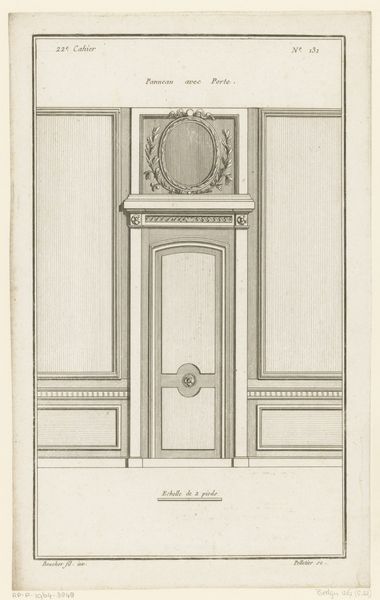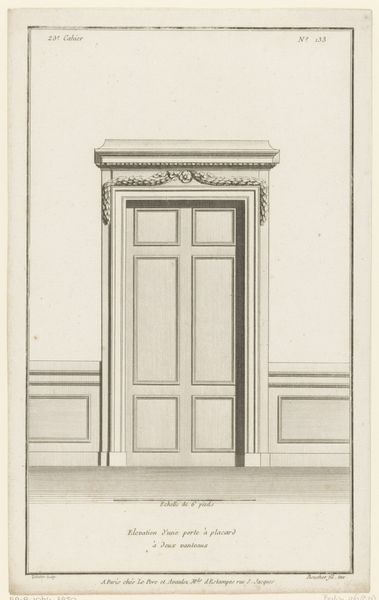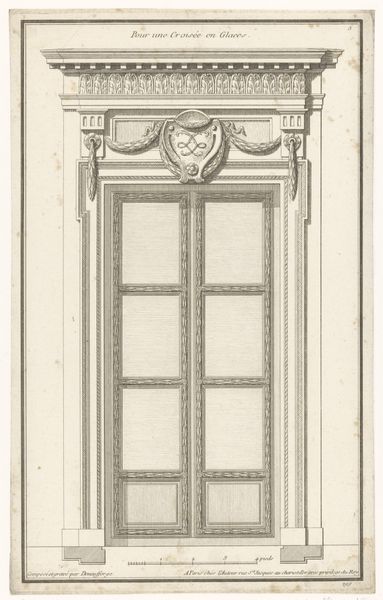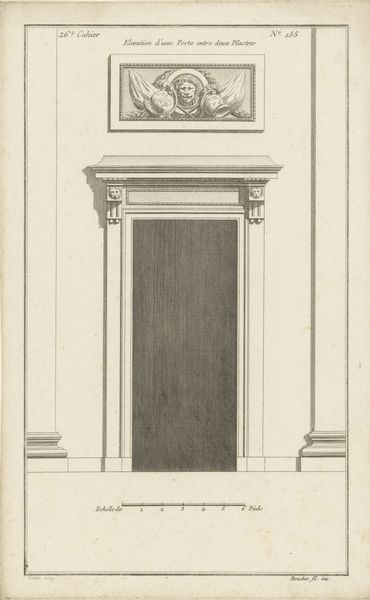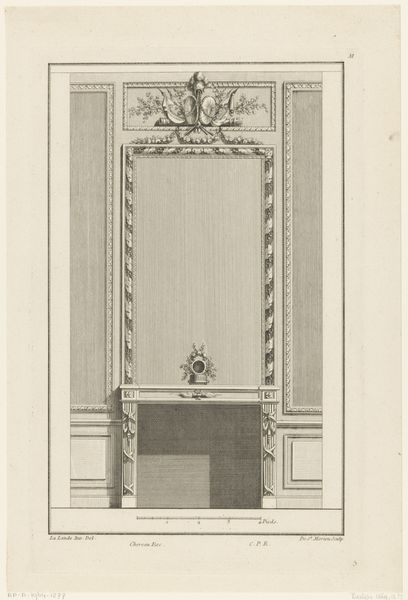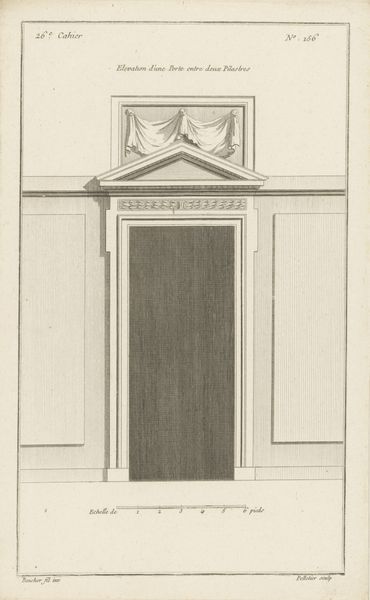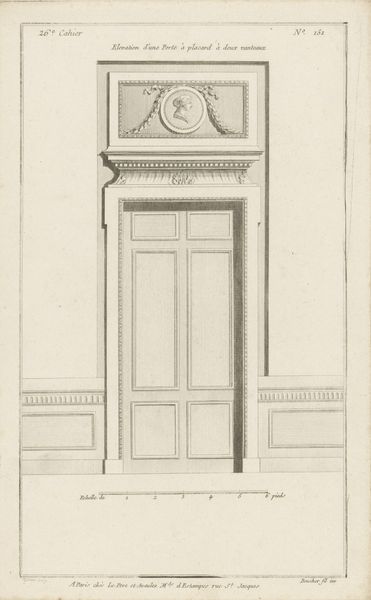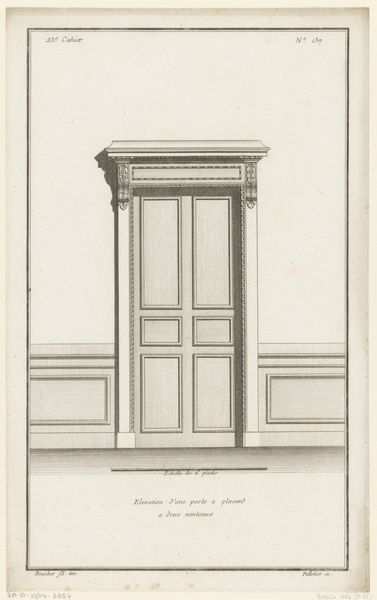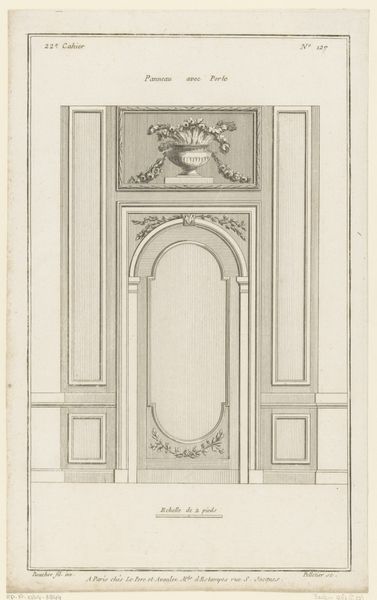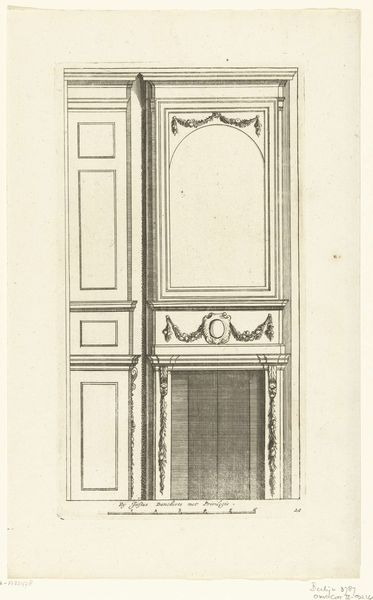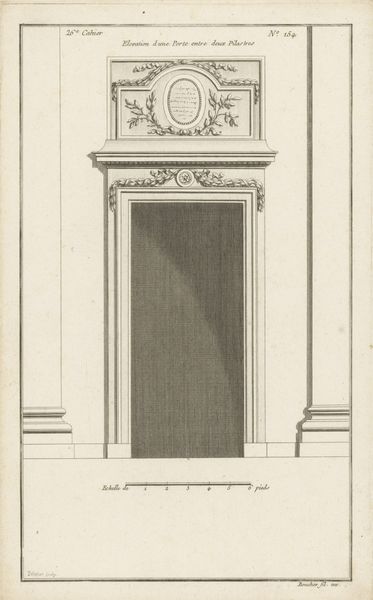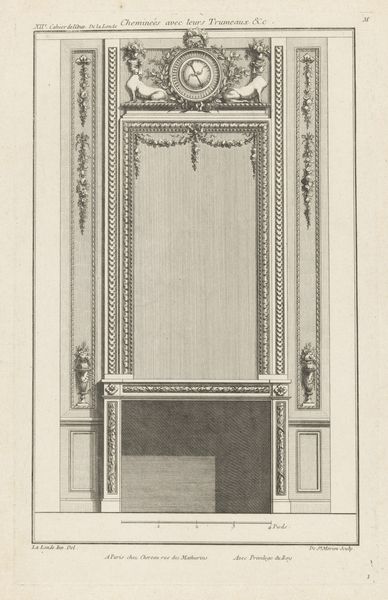
drawing, print, paper, engraving, architecture
#
drawing
#
neoclacissism
# print
#
paper
#
geometric
#
engraving
#
architecture
Dimensions: height 326 mm, width 203 mm
Copyright: Rijks Museum: Open Domain
Curator: Editor: This is "Glazen deur en panelen," a drawing and engraving on paper by Jean Pelletier, created between 1772 and 1779. It feels so…orderly, I guess is the word? Almost like a stage set. How do you interpret this work within its historical context? Curator: Well, what strikes me is how this piece embodies the Neoclassical movement. But more than that, how it signals a societal longing for order and rationality amidst the pre-revolutionary unease in France. Consider the clean lines and geometric precision - do you see a connection between this aesthetic and the political climate of the time? Editor: I hadn’t thought about it like that, but now that you mention it, yes! It's like the artwork is trying to create a sense of control that wasn’t actually there in society. So the rigid structure isn't just about aesthetics, it’s a kind of… statement? Curator: Precisely! Think of the role of art in reflecting and challenging societal structures. This isn’t just an image of a door. What narratives about class and privilege do you think are embedded within these architectural aspirations? Does this doorway open to all, or only a select few? Editor: It’s designed to look accessible with the glass, but those refined details also hint at exclusivity and status...It really brings a lot of questions about access and power. I never looked at a drawing like this for these angles. Curator: I think exploring those tensions—between access and restriction, order and chaos—helps us understand the period's complex social dynamics. Looking closely, the artwork reveals its intricate story, layered with both privilege and its potential precarity. Editor: Definitely. Now I’m seeing this design as so much more than just an image of a door.
Comments
No comments
Be the first to comment and join the conversation on the ultimate creative platform.

